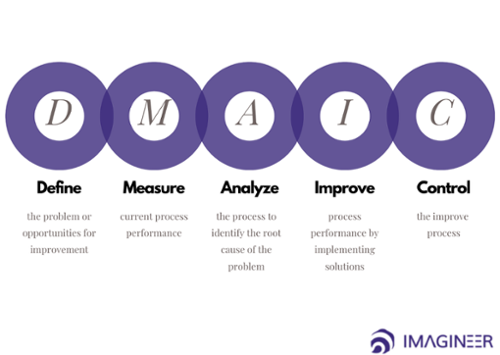The best way to measure and improve your processes
Imagine you have a cake factory, you already have a defined brand, and your customers buy from you expecting to receive a product of the same size,...
By Role
By Industry
By Target Customer
What We Offer
We drive business growth by improving operational efficiency through process optimization, smart automation, and cost control. Our approach boosts productivity, reduces expenses, and increases profitability with scalable, sustainable solutions
Customer Experience
We design memorable, customer-centered experiences that drive loyalty, enhance support, and optimize every stage of the journey. From maturity frameworks and experience maps to loyalty programs, service design, and feedback analysis, we help brands deeply connect with users and grow sustainably.
Marketing & Sales
We drive marketing and sales strategies that combine technology, creativity, and analytics to accelerate growth. From value proposition design and AI-driven automation to inbound, ABM, and sales enablement strategies, we help businesses attract, convert, and retain customers effectively and profitably.
Pricing & Revenue
We optimize pricing and revenue through data-driven strategies and integrated planning. From profitability modeling and margin analysis to demand management and sales forecasting, we help maximize financial performance and business competitiveness.
Digital Transformation
We accelerate digital transformation by aligning strategy, processes and technology. From operating model definition and intelligent automation to CRM implementation, artificial intelligence and digital channels, we help organizations adapt, scale and lead in changing and competitive environments.
Operational Efficiency
We enhance operational efficiency through process optimization, intelligent automation, and cost control. From cost reduction strategies and process redesign to RPA and value analysis, we help businesses boost productivity, agility, and sustainable profitability.
Customer Experience
Marketing & Sales
Pricing & Revenue
Digital Transformation
Operational Efficiency
4 min read
Por Aileen Pierce | Jun 05, 2025
4 min read
Por Aileen Pierce | Jun 05, 2025
“Life is a process”. If you think about it, it doesn't take too much philosophizing to realize that this is so. Life is a process.
You wake up, get out of bed, go to the bathroom, have breakfast... the daily routine. On the way to work, you go through the process of transporting yourself. At work, all the activities you do are part of a larger process. Even looking at it from a macro perspective, the typical "you are born, you grow, and you die". In nature, as they taught you in school with the little bean, plants have a process of growth, and butterflies have their process of metamorphosis.
Where am I going with all this? That throughout life we are in a process of growth, of learning, of modification, of constant changes, and just as it applies at a personal level, it also applies at a business level. Continuous improvement is key, businesses cannot remain static in a market that moves at high speeds, it would be like slowing down on a highway where cars go at 120 km/h.
That is why it is essential for your business to understand your processes, especially those that impact the customer experience. If you understand what you do, find out where the problems are and what to do to solve them, you will have an efficient and effective process capable of satisfying customers. To help you put change into practice, I will explain a methodology used in different industries and well-known companies.
If you want to know more about customer experience, I invite you to read: What Is Customer Experience and What Is It for? And Guide: Customer Experience and its applications to your business
Index
Six Sigma is a methodology developed as a tool for controlling and reducing process variations. Its name refers to 6 standard deviations from the mean, that is, 3.4 defects per million: this from a statistical point of view. Basically, this work philosophy adjusts processes to a low tolerance with respect to irregularities.
To have such precision of course you need to apply a whole series of tools that allow the continuous improvement of the process, that is, now a problem arises or a practice with opportunity for development is detected, it is sought how to solve and control, eventually reaching a process with little variation.
Within the framework of this philosophy there are several tools, but in this blog, I will explain the DMAIC methodology, which will give you the structure with steps to follow to carry out the continuous improvement you are looking for. If you want to read about other tools that can help you with the analysis of processes and improvement of customer experience, I invite you to see Secret Tool for a Better Customer Journey Map: Lean Six Sigma

DMAIC is a highly effective methodology made up of 5 phases, which are represented in the acronym. As I mentioned before, it is part of the Six Sigma toolbox and has a problem-solving approach, providing a structured and clear framework.
Its phases are:

Before going further into the explanation, it is key to understand that prior to the application of the methodology you must choose a good project. In your company there may be several problems, but not all of them have the same level of importance or are suitable to be analyzed. Like the SMART objectives, you need to establish criteria for project selection:
The DMAIC methodology is used in many projects, the reason is in its functions and all that it contributes to the improvement of a process. Here are a few points:
Regarding when to use it, it will depend mainly on the magnitude of the project. I mentioned before that the project must be achievable, but you should not get confused and think of projects that are too simple. You are not going to apply a whole 5-step methodology to any problem that arises, especially when the cause is easy to identify, and the immediate solution is supported by convincing data.
Otherwise, the problem is complex, its effects on the process are clear and of high risk to the company, you are not sure of the root cause and the solutions should definitely be supported by data, but there are no corresponding measurements yet. In this scenario you should focus on developing DMAIC, since the methodology follows a series of steps and you do not move on to the next step until you complete the current phase, you make sure you do not omit crucial information or actions.
In other words, you keep a clear order. You define the problem, objective, and scope, you understand the entire process and its critical elements. Once you understand the problem in your process, you can measure the performance of the current situation and establish the indicators (KPI's) that will help you visualize the changes quantitatively. With data, you can move on to analysis, where you should find root causes to your problem and prioritize the most important ones. Having a clear understanding of what is causing the problem, you then set about finding solutions and implementing them to reflect an improvement that you can then monitor, continually re-evaluating.
As you have seen so far, the methodology follows a logical sequence. Now that you understand what to do in the definition, measurement, analysis, improvement, and control phase, I will show you which tools can facilitate the activities that correspond to each stage.

These are some of the tools you can use, but there are many more. Moreover, you should not necessarily apply all of them to the same project, as this will depend on the process and its intrinsic characteristics.
In conclusion, remember that we must be in a state of constant change and your business, like the butterfly, must undergo metamorphosis to reach its ideal state, but you should not stop there, because continuous improvement will lead you to always look for a better option for your processes, reevaluating periodically.
<<READ MORE: DMAIC and other Six Sigma tools>>

Imagine you have a cake factory, you already have a defined brand, and your customers buy from you expecting to receive a product of the same size,...

As in the retail or manufacturing industry, the financial sector does not escape having a high volume of daily transactions. Each transaction is data...

The manufacturing industry constantly faces challenges in its Business Process that can affect efficiency, quality, and profitability. From...